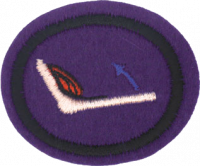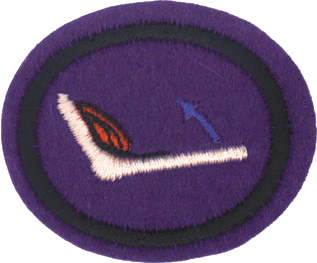Difference between revisions of "AY Honors/Bones, Muscles, and Movement/Answer Key/es"
From Pathfinder Wiki
< AY Honors | Bones, Muscles, and MovementAY Honors/Bones, Muscles, and Movement/Answer Key/es
(Created page with "</noinclude> <!-- 9. Ser creativo y construir un modelo de uno de las seis articulaciones de libre movimiento. -->") |
(Updating to match new version of source page) |
||
| (13 intermediate revisions by 2 users not shown) | |||
| Line 1: | Line 1: | ||
| − | + | {{HonorSubpage}} | |
| − | + | <section begin="Body" /> | |
| − | |||
| − | {{ | ||
| − | |||
| − | |||
| − | |||
| − | |||
| − | |||
| − | |||
| − | |||
| − | }} | ||
| − | |||
| − | |||
| − | |||
| − | |||
| − | |||
| − | <section begin="Body" /> | ||
{{ansreq|page={{#titleparts:{{PAGENAME}}|2|1}}|num=1}} | {{ansreq|page={{#titleparts:{{PAGENAME}}|2|1}}|num=1}} | ||
<noinclude></noinclude> | <noinclude></noinclude> | ||
| Line 69: | Line 53: | ||
{{ansreq|page={{#titleparts:{{PAGENAME}}|2|1}}|num=7}} | {{ansreq|page={{#titleparts:{{PAGENAME}}|2|1}}|num=7}} | ||
<noinclude></noinclude> | <noinclude></noinclude> | ||
| − | <!-- 7. Mencionar las tres clases de articulaciones entre los huesos. --> | + | <!-- 7. Mencionar las tres clases de articulaciones entre los huesos. --> |
| − | {{clear}} | + | {{clear}} |
{{clear}} | {{clear}} | ||
| Line 91: | Line 75: | ||
{{ansreq|page={{#titleparts:{{PAGENAME}}|2|1}}|num=10}} | {{ansreq|page={{#titleparts:{{PAGENAME}}|2|1}}|num=10}} | ||
<noinclude></noinclude> | <noinclude></noinclude> | ||
| − | <!-- 10. | + | <!-- 10. ¿Cuál es el otro nombre de un hueso roto? Hacer una lista de tres clases de fracturas que pueden ocurrir en los huesos. Describir cómo sanan los huesos y cómo los médicos pueden ayudar en este proceso. --> |
| − | |||
{{clear}} | {{clear}} | ||
| Line 110: | Line 93: | ||
{{ansreq|page={{#titleparts:{{PAGENAME}}|2|1}}|num=11}} | {{ansreq|page={{#titleparts:{{PAGENAME}}|2|1}}|num=11}} | ||
<noinclude></noinclude> | <noinclude></noinclude> | ||
| − | <!-- | + | <!-- ¿Quién la puede tener? Hacer una lista de al menos cinco hábitos de salud que se ocupan de mantener la salud de los huesos y los músculos. --> |
| − | |||
| − | |||
| − | |||
| − | |||
| − | |||
| − | |||
| − | |||
| − | |||
<noinclude></noinclude> | <noinclude></noinclude> | ||
| Line 124: | Line 99: | ||
{{ansreq|page={{#titleparts:{{PAGENAME}}|2|1}}|num=12}} | {{ansreq|page={{#titleparts:{{PAGENAME}}|2|1}}|num=12}} | ||
<noinclude></noinclude> | <noinclude></noinclude> | ||
| − | <!-- 12. | + | <!-- 12. ¿Cuál es la función del sistema muscular? --> |
| − | |||
<noinclude></noinclude> | <noinclude></noinclude> | ||
| Line 131: | Line 105: | ||
{{ansreq|page={{#titleparts:{{PAGENAME}}|2|1}}|num=13}} | {{ansreq|page={{#titleparts:{{PAGENAME}}|2|1}}|num=13}} | ||
<noinclude></noinclude> | <noinclude></noinclude> | ||
| − | <!-- 13. | + | <!-- 13. Nombrar y describir tres clases de tejido muscular. Dar un ejemplo de cada uno. --> |
| − | |||
| − | |||
| − | |||
<noinclude></noinclude> | <noinclude></noinclude> | ||
| Line 140: | Line 111: | ||
{{ansreq|page={{#titleparts:{{PAGENAME}}|2|1}}|num=14}} | {{ansreq|page={{#titleparts:{{PAGENAME}}|2|1}}|num=14}} | ||
<noinclude></noinclude> | <noinclude></noinclude> | ||
| − | <!-- 14. | + | <!-- 14. Ser capaz de identificar los siguientes músculos de su cuerpo: Masetero, Trapecio, Deltoides, Pectoral, Bíceps, Abdominal, Cuádriceps, Tríceps, Dorsal mayor, Glúteo máximo, Ligamento, Gastrocnemio, Soleo --> |
{{clear}} | {{clear}} | ||
| − | {{clear}} | + | {{clear}} |
{{clear}} | {{clear}} | ||
| Line 154: | Line 125: | ||
{{ansreq|page={{#titleparts:{{PAGENAME}}|2|1}}|num=15}} | {{ansreq|page={{#titleparts:{{PAGENAME}}|2|1}}|num=15}} | ||
<noinclude></noinclude> | <noinclude></noinclude> | ||
| − | <!-- 15. | + | <!-- 15. Describir el proceso que causa una contracción muscular. --> |
| − | |||
| − | |||
| − | |||
| − | |||
| − | |||
| − | |||
| − | |||
| − | |||
| − | |||
| − | |||
<noinclude></noinclude> | <noinclude></noinclude> | ||
| Line 170: | Line 131: | ||
{{ansreq|page={{#titleparts:{{PAGENAME}}|2|1}}|num=16}} | {{ansreq|page={{#titleparts:{{PAGENAME}}|2|1}}|num=16}} | ||
<noinclude></noinclude> | <noinclude></noinclude> | ||
| − | <!-- 16. | + | <!-- 16. Describir la diferencia entre músculo voluntario e involuntario. --> |
| − | |||
<noinclude></noinclude> | <noinclude></noinclude> | ||
| Line 177: | Line 137: | ||
{{ansreq|page={{#titleparts:{{PAGENAME}}|2|1}}|num=17}} | {{ansreq|page={{#titleparts:{{PAGENAME}}|2|1}}|num=17}} | ||
<noinclude></noinclude> | <noinclude></noinclude> | ||
| − | <!-- 17. | + | <!-- 17. Usando el modelo en el requisito #9, demostrar cómo los músculos, huesos y articulaciones funcionan juntos para producir movimiento. --> |
| − | |||
| − | {{clear}} | + | {{clear}} |
{{clear}} | {{clear}} | ||
| Line 192: | Line 151: | ||
{{ansreq|page={{#titleparts:{{PAGENAME}}|2|1}}|num=18}} | {{ansreq|page={{#titleparts:{{PAGENAME}}|2|1}}|num=18}} | ||
<noinclude></noinclude> | <noinclude></noinclude> | ||
| − | <!-- 18. | + | <!-- 18. Encontrar tres textos en la Biblia donde se menciona los huesos y/o músculos. Decir cada uno en sus propias palabras. --> |
| − | |||
| − | |||
<noinclude></noinclude> | <noinclude></noinclude> | ||
{{CloseReq}} <!-- 18 --> | {{CloseReq}} <!-- 18 --> | ||
| − | + | ||
| + | [[Category:Adventist Youth Honors Answer Book/Do at home{{GetLangSuffix}}]] | ||
| + | {{CloseHonorPage}} | ||
Latest revision as of 16:46, 3 January 2023
Huesos, músculos y movimiento
Nivel de destreza
2
Año
1999
Version
22.12.2025
Autoridad de aprobación
Asociación General
1
¿Cuál es la diferencia entre exosqueletos y endoesqueletos? ¿Qué clase de esqueleto tienen los seres humanos?
2
Mencionar tres funciones del sistema esquelético.
3
¿Un hueso es un tejido vivo? Explicar porque sí o porque no.
4
Describir la estructura y el desarrollo de los huesos.
5
Identificar los siguientes huesos del sistema esquelético:
- Carpos
- Clavícula
- Cráneo
- Fémur
- Peroné
- Húmero
- Mandíbula
- Huesos maxilares
- Metacarpos
- Rótula
- Pelvis
- Falanges
- Radio
- Costillas
- Escápula
- Cóccix
- Esternón
- Tarsos
- Tibia
- Cúbito
- Vértebras
6
¿Qué son las articulaciones?
7
Mencionar las tres clases de articulaciones entre los huesos.
8
Nombrar y describir seis clases de articulaciones de libre movimiento. Ser capaz de encontrar un ejemplo de cada una de estas en el cuerpo.
9
Ser creativo y construir un modelo de uno de las seis articulaciones de libre movimiento.
10
¿Cuál es el otro nombre de un hueso roto? Hacer una lista de tres clases de fracturas que pueden ocurrir en los huesos. Describir cómo sanan los huesos y cómo los médicos pueden ayudar en este proceso.
11
¿Qué es la osteoporosis? ¿Quién la puede tener? Hacer una lista de al menos cinco hábitos de salud que se ocupan de mantener la salud de los huesos y los músculos.
12
¿Cuál es la función del sistema muscular?
13
Nombrar y describir tres clases de tejido muscular. Dar un ejemplo de cada uno.
14
Ser capaz de identificar los siguientes músculos de su cuerpo:
- Masetero
- Trapecio
- Deltoides
- Pectoral
- Bíceps
- Abdominal
- Cuádriceps
- Tríceps
- Dorsal mayor
- Glúteo máximo
- Ligamento
- Gastrocnemio
- Soleo
15
Describir el proceso que causa una contracción muscular.
16
Describir la diferencia entre músculo voluntario e involuntario.
17
Usando el modelo en el requisito #9, demostrar cómo los músculos, huesos y articulaciones funcionan juntos para producir movimiento.
18
Encontrar tres textos en la Biblia donde se menciona los huesos y/o músculos. Decir cada uno en sus propias palabras.


